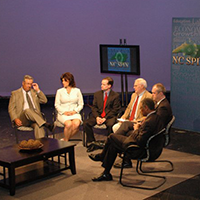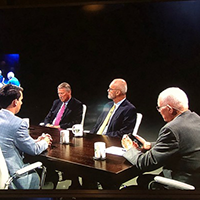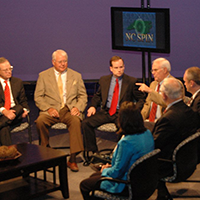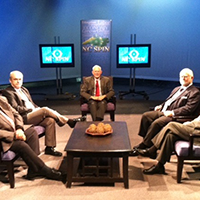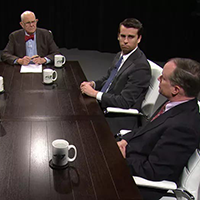Analyzing the Helene-FEMA designated NC counties
Published October 3, 2024
Amid the absolute devastation and human impact that the remnants of Hurricane Helene left on the South, and particularly on western North Carolina, more and more discussion is focused on the political impact that could be felt in a quarter of North Carolina's counties.
I would be remiss if I didn't ask us all--political analysts, journalists/reporters, campaigns and their operatives, and the general public, outside the 25 counties of FEMA designation--to remember these are fellow North Carolinians who have been impacted in a such a manner that very few of us can fully comprehend and realize the magnitude of what they will be confronting for months, if not years.
But as is always the case in our hyper-polarized nation, the immediate question beyond that consideration of the human toll is: 'what's the political impact'?
Partly, I would say the following: heck if I know. North Carolina has a long experience of dealing with hurricanes and their sizable impacts, but its typically on the "other side" of the state down east (or in rare situations, in the middle/Piedmont area such as Hurricane Hugo).
But we do have some sense of the political dynamics of the 25 counties designed by the president and FEMA, namely the current voter registration figures and the 2020 election results, to garner a picture of the Helene-impacted counties.
First, out of the 7.6 million registered voters in the September 29, 2024 voter registration data file provided by the NC State Board of Elections, nearly 1.3 million are in the 25-designated counties, representing about 17 percent of North Carolina's voter pool. Since the Eastern Band of the Cherokee Nation was included in the FEMA designation, I've created a separate category for the three counties that are covered: Graham, Swain, and Cherokee.
Based on party registration, registered Unaffiliateds and Republicans dominate the Helene NC counties, with a combined three-quarters of the voters. Registered Democrats are 23 percent of the voters.
 |
| Comparison of Party Registrations based on 9-29-24 Voter Registration from the NC State Board of Elections |
So, the twenty-five NC counties are much more Republican in registration than the state, much less Democratic, and reflective of the state's unaffiliated registered voter.
When analyzing the racial and ethnic composition of the voters, the 25 NC Helene counties are much more White non-Hispanic in registration.
 |
| Comparison of Voter Race-Ethnicity based on 9-29-24 Voter Registration from the NC State Board of Elections |
Conversely, the counties are less Black/African American, slightly less Hispanic/Latino, and less 'all others' in comparison to the state as a whole.
 |
| Comparison of Regions based on 9-29-24 Voter Registration from the NC State Board of Elections |
 |
| Comparison of Voter Generations based on 9-29-24 Voter Registration from the NC State Board of Elections |
One last data point on the 25 Helene counties compared to the rest of the state: as noted in term of party registration, it is a solid Republican area.
If you combine the 2020 general election results for the U.S. President, U.S. Senate, and N.C. Governor elections (what I call the "Big 3"), you'll see that North Carolina is a 50-50 state. But the Helene counties are a 61-39 two-party Republican area, making it a solid Republican section of the state.
 |
| "Big 3" Election Results from 2020's General Election, compiled by Michael Bitzer |
So, when we talk about the political dynamics of the Helene-impacted counties in North Carolina, we're describing a more Republican, more rural, older, and more-White voter population that is ultimately about 17 percent of both the registered voters and actual votes cast in the 2020 election.
How will all of this impact November's general election? I again refer you to the response I gave at the beginning of this piece: no idea.
But with the sheer amount of recovery and rebuilding, along with the election infrastructure that needs to be considered (voting locations for early and Election Day, poll workers, and other dynamics at play), what the state may need to consider is a significant investment into rebuilding efforts and consideration of building into the election period more forms of 'convenience' into voting, however defined by the 25 counties most impacted to ensure that their residents, while in the midst of recovery, can voice their votes at the ballot box.
Dr. Michael Bitzer holds the Leonard Chair of Political Science and director of the Center for North Carolina Politics & Public Service at Catawba College.



